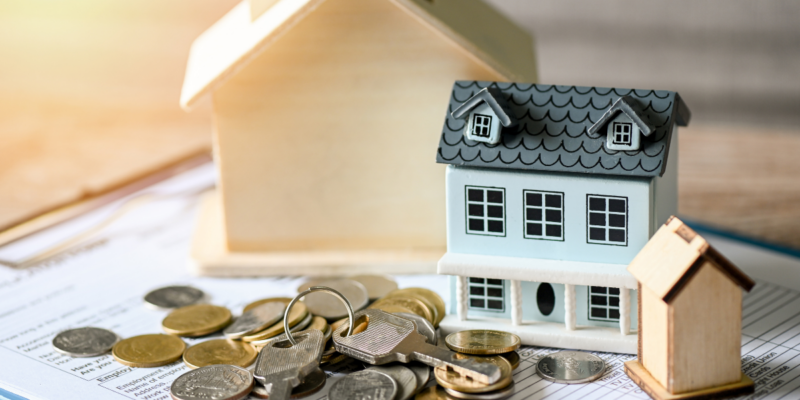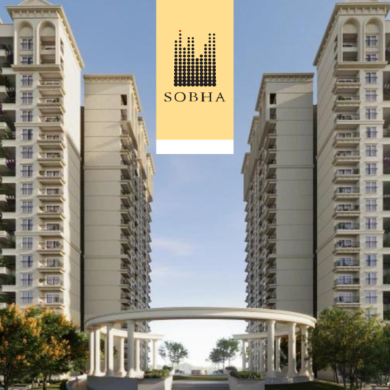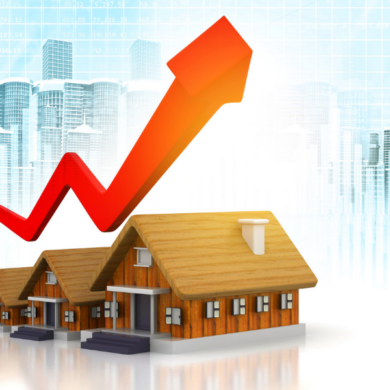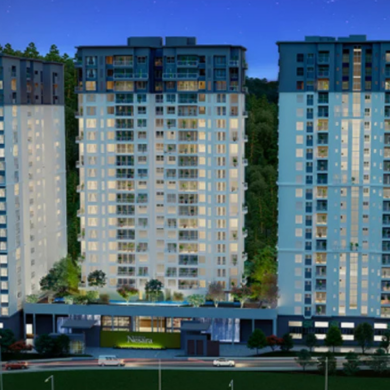What are Flat Maintenance Charges: Everything You Need to Know!
December 28th, 2024

Flat maintenance charges are regular fees paid by residents to cover the upkeep of common areas, essential services, and shared amenities, ensuring a well-maintained and comfortable living environment.
Maintenance charges are essential for ensuring smooth operations and upkeep of apartment complexes. These cover shared facilities and services, enabling a well-managed living environment.
Understanding flat maintenance charges law, GST implications, and average costs helps you stay informed about your financial responsibilities. From RERA guidelines to specifics like apartment maintenance charges in Bangalore or Kerala, knowing the details empowers you to take better decisions about your home.
Table of Contents
What are Maintenance Charges?
Maintenance charges on flats are the recurring fees that homeowners contribute, for the upkeep of shared facilities and services in the housing complex. These fees cover expenses for essentials like electricity, water supply, security, and cleaning of common areas.
Understanding flat maintenance charges law and GST on maintenance charges of flats helps owners stay informed about their rights and responsibilities.
Why do Apartment Owners Pay Maintenance Charges?
Apartment owners pay maintenance charges to ensure a functional, safe, and well-maintained living environment. These charges usually cover:
- Maintenance of common areas like lifts, staircases, and gardens
- Repairs and upkeep of shared infrastructure
- Utility costs, such as electricity and water for common areas
- Security services, including guards and CCTV monitoring
- Upkeep of amenities such as swimming pools, clubhouses, gyms, children’s play areas, and more
Knowing the average maintenance charges for flats allows you to plan your expenses effectively, while ensuring that your residential complex operates smoothly.
Read More: What is Sale Deed? – Meaning, Format, Process
Who Determines the Maintenance Charges?
The determination of maintenance charges is handled by:
- Housing Societies: After formation, these societies manage expenses and set maintenance charges of flats based on collective needs
- Developers: Initially, they collect these charges until the residents’ society is formed and registered, and the maintenance responsibility is transferred to them
- Resident Welfare Associations (RWAs): These associations ensure transparency and fairness while finalising flat maintenance charges
Factors influencing these charges include RERA rules for maintenance charges, flat size, and usage. Understanding such aspects, including maintenance charges on flats in India, ensures clarity in financial planning.
Components of Maintenance Charges
This amount includes many components that ensure the smooth functioning of residential complexes. Apart from these, you can also understand flat maintenance charges law and its application in your community. Below are the key components:
- General Maintenance: This covers essential repairs, repainting, and upkeep of common areas such as lifts, corridors, and staircases
- Utilities: Includes costs of electricity, water supply, and power backup for shared areas. GST on maintenance charges of flats also applies, if monthly expenses exceed ₹7500.
- Security Services: Involves expenses for security staff, CCTV systems, and advanced security technologies, which are increasingly common
- Cleaning and Waste Management: Daily cleaning of shared spaces and waste disposal systems ensures a clean and hygienic environment
- Amenities: Covers the upkeep of amenities like swimming pools, gyms, jogging tracks, and clubhouses – influencing the average maintenance charges for flats
- Sinking Fund: A reserve fund for significant repairs or infrastructure upgrades, as mandated by flat maintenance charges law
- Sustainability Initiatives: Trending in 2025, these include measures such as green energy systems, rainwater harvesting, and waste recycling units
5 Factors Affecting Maintenance Charges in 2025
Maintenance charges of flats in India are subject to various factors that influence their increase or adjustment over time. Understanding these helps in planning your expenses effectively.
- Increase in Raw Material Costs: Rising prices of construction materials directly impact repair and upkeep costs
- Adoption of Smart Technology: Implementation of smart security systems and home technologies increases maintenance charges on flats
- Rising Labour Costs: Higher wages for security personnel, housekeeping staff, and maintenance teams elevate overall charges
- Introduction of Eco-friendly Solutions: Sustainability initiatives like waste recycling units and solar energy systems contribute to higher maintenance charges of flats, particularly in eco-conscious communities
- Inflation: Inflation significantly affects apartment maintenance charges in Bangalore and other cities, leading to higher costs
Read More: Capital Gains Tax in India: A Complete Guide for Property Investors
How Maintenance Charges Are Calculated
The calculation of maintenance charges on flats follows various methods, ensuring fair distribution among residents.
- Per Square Foot Basis: A widely used method where charges depend on flat size. For instance, a flat measuring 1000 sq ft at ₹3 per sq ft incurs ₹3000 per month in charges.
- Fixed Rate Basis: All residents are charged equally, irrespective of the size of their flat
- Additional Charges for Premium Amenities: Facilities like swimming pools, reserved parking, or clubhouses attract extra charges. These often influence the average maintenance charges for flats.
- GST on Maintenance Charges of Flats: Applicable for charges exceeding ₹7500 per month, as per tax laws
Example Calculation
For a 1500 sq ft flat at ₹4 per sq ft, the maintenance charges would total ₹6000 monthly. Additional charges for premium amenities or GST may apply. Being aware of RERA rules for maintenance charges ensures transparency and better financial planning for flat owners.
RERA Rules for Apartment Maintenance Fees
Understanding RERA rules for maintenance charges helps ensure compliance and fairness in managing these costs.
- Developer’s Responsibility: Builders are responsible for handling these charges until the housing society is handed over to residents
- Transparency in Charges: Builders and RWAs must provide clear and itemised details, to ensure accountability
- No Overcharging: The charges must reflect actual costs, adhering to flat maintenance charges law, to prevent unfair pricing
- Sinking Fund Requirement: As per law, a sinking fund must be created to address major repairs and infrastructure needs
- Penalty for Non-payment: Not paying the bill as per the stipulated timelines can result in penalties, as determined by the RWA or housing society
- Dispute Resolution: RERA offers a structured mechanism to resolve such conflicts, promoting transparency and fairness
Timeline for Maintenance Charges Payment
Knowing the payment timelines helps you plan and manage these charges effectively.
- Monthly Payment: A widely adopted schedule, where maintenance charges on flats are collected every month, for easier financial management
- Quarterly Payment: Some societies prefer collecting flat maintenance charges every three months, reducing administrative tasks
- Annual Payment: These schedules allow residents to pay a lump sum for the year, sometimes offering incentives for upfront payments
GST on Apartment Maintenance Charges
Understanding these rules ensures clarity, while managing GST on maintenance charges of flats.
- Applicability Threshold: GST is applicable on maintenance charges exceeding ₹7500 per month per flat
- Rate of Taxation: 18% GST is levied on the amount above ₹7500, impacting the total charges
- Exemptions: Housing societies with annual turnover of less than ₹20 lakhs are exempt from GST on maintenance charges of flats
Common Challenges with Maintenance Charges
Being aware of common challenges can help streamline these costs and address potential issues.
- Lack of Transparency: Ambiguity in the breakdown of charges can lead to mistrust between residents and RWAs
- Irregular Payments: Delays in paying maintenance charges of flats can disrupt the smooth functioning of housing societies
- Escalating Costs: Rising material prices, labour costs, and inflation contribute to higher charges
- Disputes Over Amenities Usage: Conflicts may arise when residents object to paying for amenities they do not use, affecting compliance with the flat maintenance charges law.
- Complex GST Calculations: Applying GST correctly can be challenging for RWAs and residents alike
How to Reduce Maintenance Charges
Reducing maintenance charges on flats requires strategic measures to optimise costs, while maintaining a high standard of living. Employing practical and cost-effective solutions can help you significantly lower your monthly expenses.
7 Ways to Reduce Flat Maintenance Charges
- Implement Energy-saving Measures: Using LED lighting and installing solar panels can lower electricity bills, directly reducing maintenance charges of flats
- Regular Maintenance Audits: Conducting periodic checks prevents major breakdowns, saving money and keeping you compliant with flat maintenance charges law
- Optimise Staff Allocation: Efficiently managing housekeeping and security staff ensures that you only pay for the necessary services
- Encourage Waste Segregation: Promoting waste segregation within the community reduces waste disposal costs
- Adopt Technology: AI-powered building management systems streamline operations, reducing inefficiencies and optimising these charges
- Monitor Water Usage: Installing water meters and fixing leaks can help conserve water, lowering utility expenses that contribute to flat maintenance charges
- Negotiate Service Contracts: Renegotiating vendor contracts for cleaning, security, and other services can help bring down costs, impacting the overall maintenance charges of flats
Read More: What is Property? Definition, Types, Valuation, Taxation
Key Points to Remember About Maintenance Fees
Understanding the essentials of these charges helps ensure transparency and smooth management of payments.
- Mandatory Contribution: Paying maintenance charges is a legal requirement under flat maintenance charges law, ensuring the upkeep of shared facilities
- Breakdown of Costs: Always request an itemised bill to understand how maintenance charges of flats are allocated
- GST Applicability: Amounts exceeding ₹7500 per month attract GST, increasing the total cost
- Equal Responsibility: Maintenance charges are usually shared equally or based on the flat size, ensuring fair distribution
- Sinking Fund Usage: This reserve fund should be used only for significant repairs or upgrades, as mandated by law
- Timely Payments: Paying on time helps avoid penalties and ensures the smooth functioning of the housing society
Trends in Maintenance Charges for 2025
The landscape of maintenance charges on flats is evolving, driven by advancements in technology and a growing focus on sustainability. Staying updated on these trends will help you plan better for the future.
- Use of AI-Powered Systems: AI tools for building management, like energy monitoring and automated security, are helping optimise operations – reducing maintenance charges of flats over time.
- Growing Focus on Sustainability: Initiatives such as solar energy, rainwater harvesting, and waste recycling are becoming integral to reducing maintenance costs – aligning with global environmental goals.
- Integration of EV Charging Stations: Some of the new residential projects are offering common EV charging facilities, influencing maintenance charges of flats while adding long-term value.
- Adoption of Smart Homes: Automated systems and energy-saving devices in common areas reduce costs and enhance efficiency
Conclusion
Understanding maintenance charges on flats is essential for ensuring transparency, fairness, and effective management of shared facilities. By staying informed about flat maintenance charges law, GST on maintenance charges of flats, and the factors influencing these fees, you can plan your expenses better and contribute to the smooth functioning of your community.
Employing cost-saving measures, adopting sustainable practices, and keeping up with emerging trends like smart home systems and EV charging stations can also help optimise costs and enhance the living experience. Awareness and proactive participation are key to maintaining a harmonious and well-managed residential environment.
FAQs
1. What are the maintenance charges in flats?
Maintenance charges in flats are recurring fees paid by residents for the upkeep of common facilities such as water supply, electricity, security, and amenities in the housing society.
2. How is the maintenance amount calculated?
The maintenance amount is calculated using methods like per square foot basis where charges depend on the flat’s size, or a fixed rate where all residents pay equally, along with additional fees for premium amenities.
3. What is the monthly maintenance cost?
The monthly maintenance cost varies depending on factors like flat size, amenities, and location, with maintenance charges for flats ranging from ₹2 to ₹5 per sq ft per month.
4. Should I pay maintenance if my flat is empty?
Yes, you should pay maintenance even if your flat is empty, as the charges cover the upkeep of shared facilities and services used by the entire society.
5. Can maintenance charges increase annually?
Yes, maintenance charges can increase annually, due to rising costs of raw materials, labour, utilities, and inflation, provided the hike complies with the flat maintenance charges law and is approved by the RWA or society.
6. What is the Supreme Court judgment on apartment maintenance charges?
The Supreme Court judgment on apartment maintenance charges mandates that these costs must be reasonable, transparent, and justified – ensuring flat owners are not overcharged by builders or RWAs.
7. What is the limit of maintenance charges?
There is no specific limit to maintenance charges on flats; however, they must align with actual costs and abide by the law and RERA guidelines.
8. What happens if a flat owner does not pay maintenance?
If a flat owner does not pay maintenance, they may face penalties, legal action, or restrictions on using society amenities as per the RWA's rules.
9. What do maintenance charges include?
Maintenance charges include expenses for utilities, security, cleaning, repairs, sinking fund contributions, and the upkeep of shared amenities like gyms, pools, and clubhouses.
10. What happens if I do not pay maintenance charges on time?
If you do not pay maintenance charges on time, it can result in penalties, disrupted services, and potential legal action as per the society’s bylaws or RERA rules.







